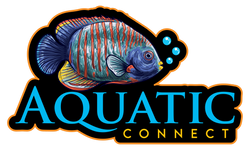Scientific Name: Pogona vitticeps
Diet: Omnivore
Venomous: No
Range: Australia
Habitat(s): semiarid desert, scrublands, dry forests
Temps: 80-105°F
Humidity: 20-30%
Size: 18-24"
Lifespan: 10-15 years
General Info
Bearded dragons are diurnal, active during the day, lizards in the Agama family. These lizards are native to the semiarid areas of central and eastern Australia. Bearded dragons get their name from the pouch on their throat that can turn black and expand, resembling a beard.
These wonderful lizards were introduced to the US pet market in the mid-1990s and have soared in popularity ever since. The Bearded dragon is known for their generally docile temperament, overall hardiness, curiosity, and loads of personality. They have also been known to recognize and form close bonds with their owners. Thanks to their popularity, all Bearded dragons for sale outside of Australia are now captive bred.
Housing
Bearded dragons can get up to 24" long and will need an enclosure that can accommodate their size. A juvenile bearded dragon can comfortably live in a 36" by 18" enclosure. An adult will need an enclosure of 48" x 24" minimum. As with all reptiles bigger is better when it comes to enclosures.
Even though Bearded dragons are a terrestrial, or ground dwelling, species, they are very adept climbers and burrowers. Adding some strong and secure climbing décor such as natural wood is highly recommended.
There are many different options for substrate for Bearded dragons. These options can range from cage carpets to porcelain tile to organic soil and sand mixture. The choice of using a loose substrate continues to be a hotly debated issue. The crushed walnut shell substrate is one of the substrate types we do not recommend, some people swear by it but to us it is not worth the risk.
Heating, Lighting, & Humidity
In a Bearded dragon’s natural habitat there is an abundance of sunlight and heat. Bearded dragons can often be found basking in the sun.
Having a strong UVB light such as a Reptisun 10.0 is a must for Bearded dragons. A strong UVB light will help your dragons to absorb calcium, regulate hormones, regulate metabolism, and increases mood.
A lot of lizards, including bearded dragons, have what's called a parietal eye. This eye is located on top of their head and is part of the pineal system. This eye is photoreceptive and helps the Bearded dragon regulate their circadian rhythm and hormones such as melatonin.
Along with lots of bright light, Bearded dragons love the heat. The enclosure needs a thermal gradient that ranges from 75-80°F on the cool side to 95-100°F . The basking spot should be located on the hot side of the enclosure and should be 105-110°F.
Being from a natural environment of semiarid lands bearded dragons should not have much humidity in their enclosures. The enclosure should register a humidity of only 20-30%.
Feeding
Bearded dragons are omnivorous, which means they eat food from both plant and animal sources. The diet ratios for Bearded dragons will change as they grow.
- A hatchling bearded dragon needs roughly 80% animal protein and 20% plant matter.
- Juveniles will need roughly 50% animal protein and 50% plant matter.
- Adults will need roughly 20% animal protein and 80% plant matter.
Crickets and Dubia roaches make great feeder insects. You typically want to feed as many as your dragon can eat within 5-10 minutes.
You should always have a shallow water dish with fresh water available for your Bearded dragon. Contrary to a common misconception, keeping a shallow water dish in your enclosure will not raise the humidity and cause issues.
Health
Bearded dragons are typically a very hardy species. There are a couple of common issues that are seen but they are routinely found to be caused by improper care and husbandry.
Obesity is one of the most common issues seen. Reptiles in general have evolved to not require food every day. It is actually quite beneficial for your Bearded dragon to skip a feeding day on a routine basis.
Metabolic Bone Disease (MBD) is unfortunately another pretty common issue that is found among Bearded dragons. The cause of metabolic bone disease is a lack of calcium and vitamin D3 which is typically tied to a lack of UVB light. The lack of calcium in a dragon’s system causes their bodies to pull the calcium from their bones which created weak, fragile bones and can often lead to physical deformities. These deformities can leave the animal in pain and discomfort as they are not able to move around they way that they should.
If you suspect that your animal is ill or having any type of adverse medical issue it is always best to seek veterinary care, from a veterinarian who is trained in reptiles, to be checked out and treated.
Summary
Bearded dragons are wonderful animals! Their ease of care, overall hardiness, laid back demeanor, and tons of personality easily earn them a spot as one of the most popular pet reptiles available. With the proper care your Bearded dragon can provide you with years of fun and companionship.
As with always, Scales & Tails Exotic Pets is here for you for all of your online reptile accessory and supply needs. If you have any questions at all please use the "Contact Us" form on our website and we will get back to you as soon as possible!


